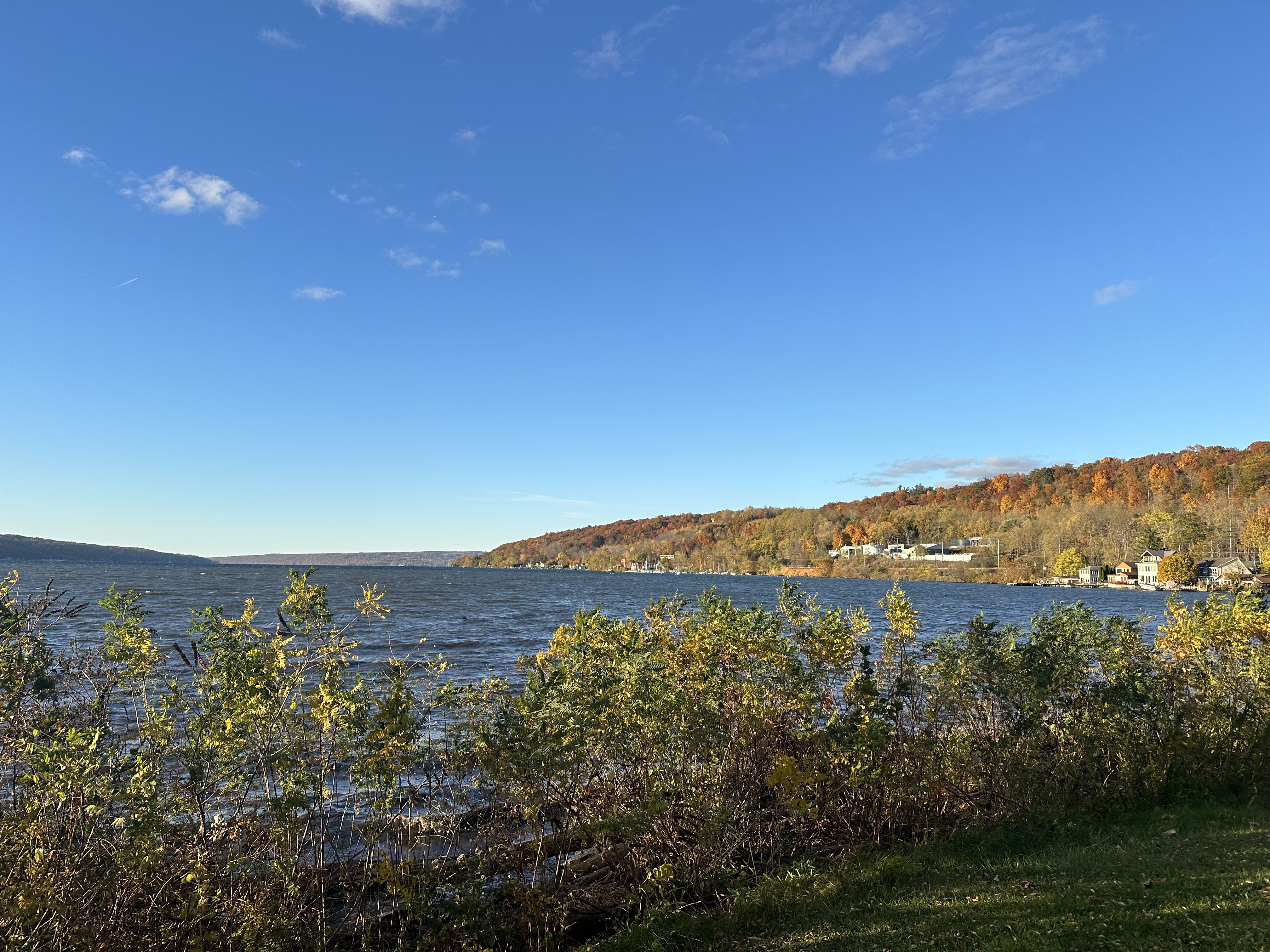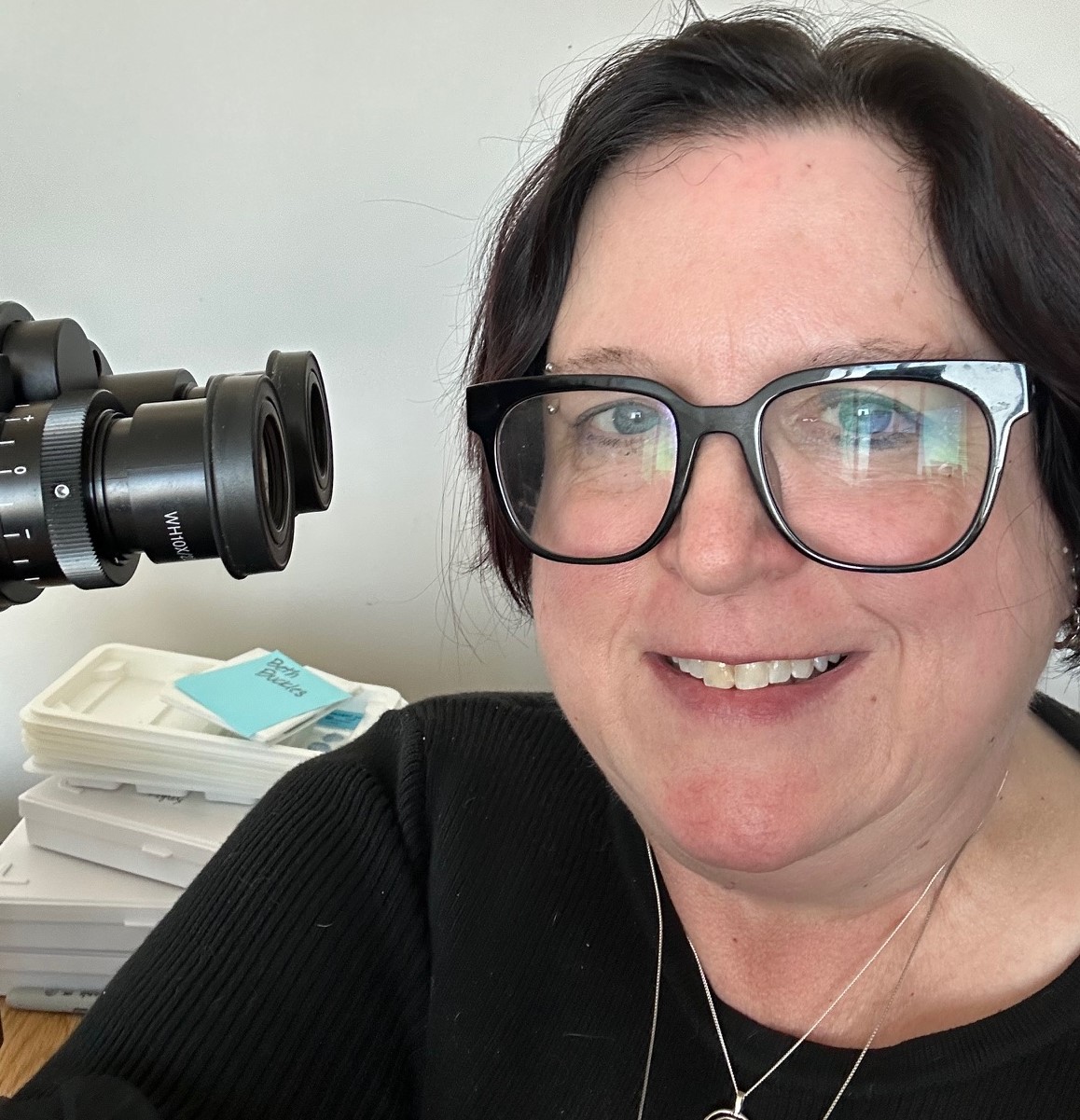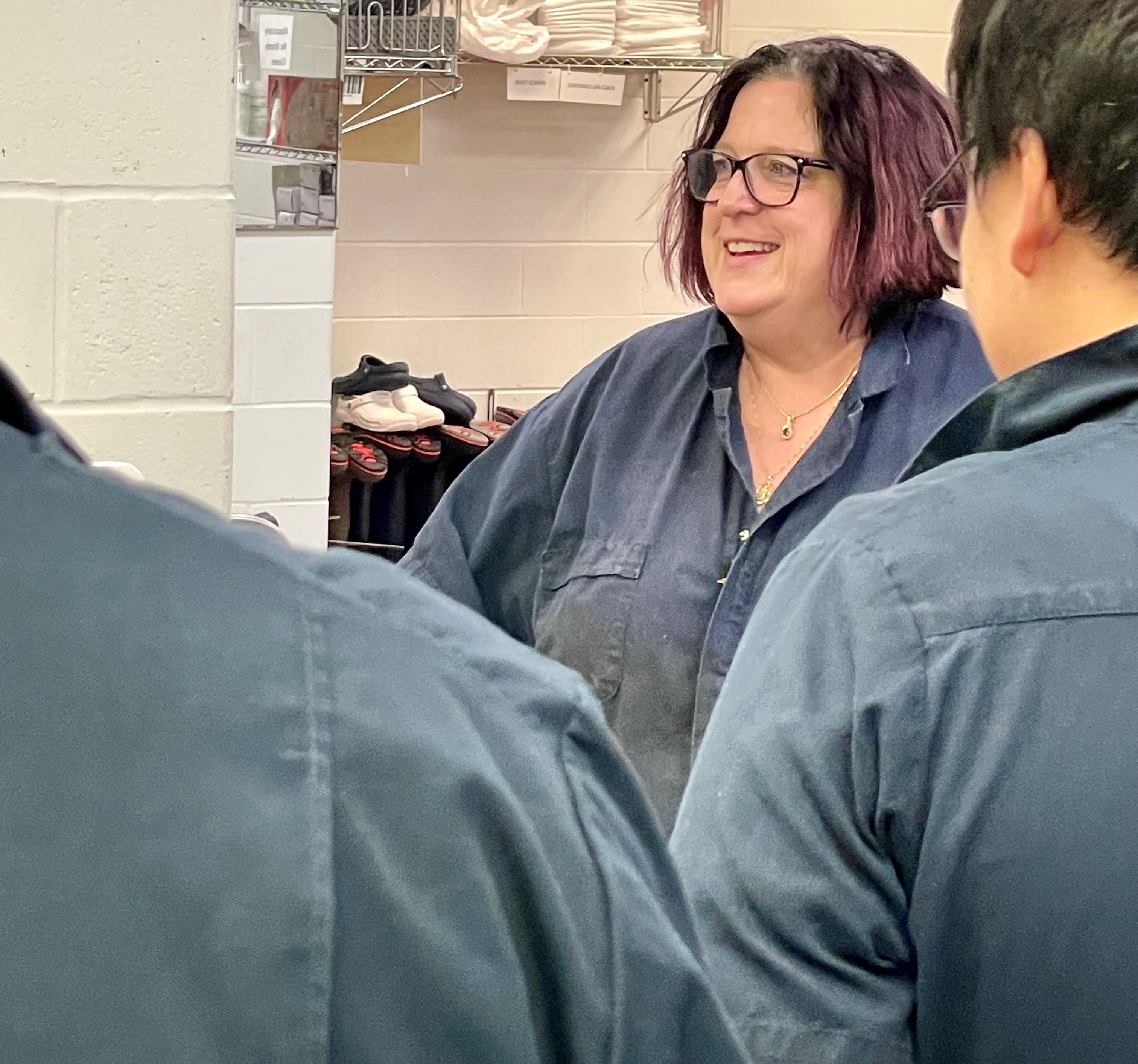Wildlife Pathologist: Beth Buckles
Ithaca may pride itself on being “gorges”, but in my opinion the best part of living in the Finger Lakes is Autumn! The changing leaves, crisp air, and fall sunshine make this the perfect time of year to walk dogs, hike local parks, go wine tasting, and of course, make large amounts of apple butter! Autumn also marks a time of transition for wildlife diagnostics, allowing for a brief respite between the large number of cases we see in the summer and the increased number of cases yet to come during the winter months. It also marks the return of students.
As a Wildlife Pathologist, there is nothing I would consider a “typical day”. Anything can happen and usually does. Most days start when one of my two dogs or two cats decides it’s time for breakfast. Once a cat decides its feeding time, there is no changing her mind! After taking care of the furry family members, I take a little break for some morning meditation and then get ready to dive into work.
My first order of business is to perform postmortem examinations of any wildlife cases that have come into the service. The species we see include almost anything with fur or feathers, along with a healthy mix of reptiles and amphibians. Recently, I got to examine a crayfish! Next, I head to the office and spend some quality time with my microscope and computer, examining slides that have come out of the lab. The slides may be of tissues submitted by the pathology team in Albany or cases I did the gross dissections on a week or two earlier.
A major goal of the Cornell Wildlife Health Lab is to document trends and changes in wildlife diseases. Postmortem data is an important component in achieving that objective. In October, I like to review the types of diagnoses we have made during the summer and look for any changes in disease trends from previous years. This year was a summer of West Nile Virus and rabies virus infections, a welcome change from the avian influenza cases seen last year!
Though diagnostics make up the bulk of my work, as a faculty member at the College of Veterinary Medicine I do a lot of teaching. My students include veterinary and graduate students, Anatomic Pathology residents, and interns specializing in wildlife medicine. Honestly, this is one of my favorite parts of the job. There is something very satisfying in watching a trainee make their first diagnosis of canine distemper virus in a fox, helping a graduate student collect pathology data for a project, or inspiring a veterinary student’s interest in wildlife and pathology.
This October has been particularly exciting since we have several new training opportunities through the K. Lisa Yang Center for Wildlife Health. I have been able to work with the veterinarians of the Swanson Wildlife Hospital to support their new Residency in Wildlife Medicine and answer lots of questions from potential graduate students interested in our two newly funded positions in Zoo and Wildlife Conservation.
Knowing that there are young people out there excited to put in the hard work to become an expert in wildlife disease and conservation is tremendously comforting. The challenges faced by wildlife populations are not going away, and being able to help the next generation find solutions to these challenges is truly an honor and makes every day a little more special.





